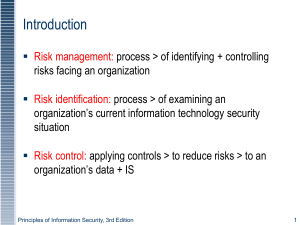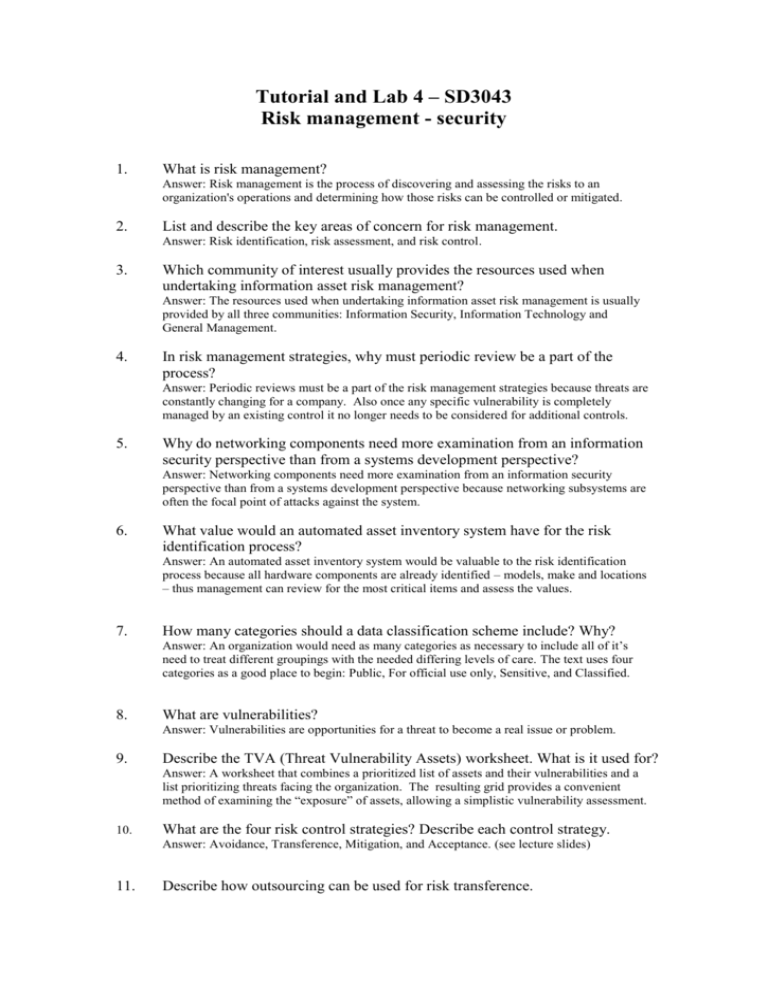1 Describe How Outsourcing Can Be Used for Risk Transference
Q6 How is an application layer firewall different from a packet filtering firewall. What is residual risk.
Risk transfer has been a hot topic for some years now.

. A lot of outsourcing has been predicated on the idea well transfer responsibility to a third party they can handle the risk better than us and well just have a nice predictable contract for the services. Risk transfer is the assignment of a risk to a third party using a legal agreement. The ability to transfer risk should be at the root of all outsourcing engagements.
What three planning approaches are discussed in the text as opportunities to mitigate risk. Describe how outsourcing can be used for risk transference. Describe how outsourcing can be used for risk transference.
Outsourcing allows an organization to transfer the risk associated with the management of complex systems to another organization that has experience in dealing with those risks. Describe the defend strategy. One of the key elements of outsourcing that is usually nullified by poor contract and SLA recourse is the ability to transfer risk from the service receiver to the external service provider.
A classic example of risk transfer is the purchase of an insurance. List and describe the three common methods. It is usually done with.
John Spacey December 02 2015. What three planning approaches are discussed in the text as opportunities to mitigate risk. Risk transfer is a risk reduction method that shifts risk from the project to another party.
We examines the current schedule and services rendered mech View the full answer. Describe the mitigate strategy. In other words risk transfer involves one party assuming the liabilities of.
What three planning approaches are discussed in the text as opportunities to mitigate risk. Describe the transfer strategy for controlling risk. Any company can transfer its risk handling segment to another company.
Describe the transfer strategy. Manufacturing companies will try to focus on manufacturing so they can not operate risk assessment and mitigation operation and manufacture simultaneously. Describe how outsourcing can be used for this purpose.
Risk transfer refers to a risk management. Get solutions Get solutions Get solutions done loading Looking for the textbook. Solution- Outsourcing uses for risk transference- It is very important control mechanism that transfers entire risk to 3rd party vendor outside sources processes and companies.
Describe the mitigation strategy for controlling risk. One of the attractions of outsourcing is the implicit element of risk transfer. This is done to concentrate on the core business of a company.
However if the company outsources the business function the general expectation is that the supplier of the outsourced services is. Describe how outsourcing can be used for this purpose. With the increased growth in Cloud Computing use review a cloud computing provider and argue if risk has or can be transferred based on their contract agreement for using the cloud.
With the increased growth in Cloud Computing use review a cloud computing provider and argue if risk has or can be transferred based on their contract agreement for using the cloud. Experts who run a high-risk business can often anticipate problems and find solution. Describe how outsourcing can be used for this.
Name and briefly describe two examplescases of risk transference in Australia that you believe this type of risk management helps to protect organisations interest. Outsourcing can be used for risk transference when an organization chooses to hire an ISP or a consulting organization for products and services such as server acquisition and configuration Web development maintenance administration and even InfoSec functions. The following are common examples.
We have step-by-step solutions for your textbooks written by Bartleby experts. Describe how outsourcing can be used for risk transference. How is an incident response plan different from a disaster recovery plan.
The risk is transferred from the project to the insurance company. Risk Management Risk management encompasses the identification analysis and response to risk factors that form part of the life of a business. One of the benefits of outsourcing is that the service provider is responsible for disaster recovery when recovery efforts are needed.
An insurance policy transfers a specific set of risks such as the fire and flood risk for a particular asset. Describe how outsourcing can be used for this purpose. Risk transference can be performed through outsourcing.
Certainly there are times when this makes a lot of sense. Describe how outsourcing can be used for risk transference. Describe how outsourcing can be used for this Describe the transfer strategy.
With the increased growth in Cloud Computing use review a cloud computing provider and argue if risk has or can be transferred based on their contract agreement for using the cloud. Describe how outsourcing can be used for risk transference. Describe the transfer strategy.
Describe the transfer strategy. Textbook solution for Management Of Information Security 6th Edition WHITMAN Chapter 7 Problem 11RQ. Q5 Describe how outsourcing can be used for risk transference.
Solutions for Chapter 4 Problem 14RQ. Describe the mitigate strategy. Technique in which risk is transferred to a third party.
When a company undertakes a business function in-house it has responsibility for the costs of correcting any systems failures and of dealing with their consequences. Describe how foreign currency options can be used for hedging in the Assume that the.

Risk Transference In Project Management

Better Safe Than Sorry Top 10 Risks Of Outsourcing Mindk Blog


Comments
Post a Comment